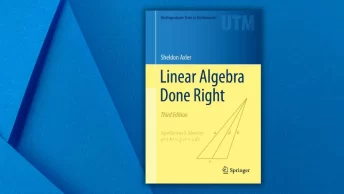Computer Architecture: A Quantitative Approach PDF is a highly influential textbook written by John L. Hennessy and David A. Patterson, first published in 1990 and updated in several editions since then. It is currently in its sixth edition, published by Elsevier in October 2018.
The book explores the fundamental principles of computer architecture and provides an in-depth analysis of modern design techniques. It studies a wide range of topics, from microarchitecture and instruction sets to scalability and parallelism.
The book has been widely praised for its clear exposition and extensive use of examples. It is regularly featured on course reading lists for computer engineering and computer science. It has sold hundreds of thousands of copies and is available in both print and e-book formats. Reviews on Amazon praise the book’s comprehensive coverage, its use of quantitative measures to illustrate concepts, and its focus on modern approaches such as multiprocessors and energy efficiency.
Table of Contents
Computer Architecture: A Quantitative Approach Summary
The book starts off by introducing the concept of computer architecture, describing the various components that make up a computer system. It then describes how these components interact, and how they can be manipulated to increase performance.
After providing an overview of the fundamentals of computer architecture, the book dives into specific topics such as instruction sets, memory hierarchy, pipeline design, and superscalar processors, branch prediction, caches, and virtual memory. It also explains how computer architectures are represented by their instruction sets, and how machine-level optimizations can be used to improve the performance of programs.
The book also covers topics such as multiprocessors, multiprogramming systems, real-time system design, and simulation techniques. In addition, it introduces the concept of dependability and how computer architectures can be designed to ensure reliability. Finally, the book presents a number of case studies that illustrate various topics discussed throughout the text.
Details of Computer Architecture: A Quantitative Approach Book
| Book | Computer Architecture: A Quantitative Approach |
| Author | David A Patterson and John L. Hennessy |
| Original language | English |
| Originally published | 1992 |
| Category | Computers |
| Publisher | Elsevier |
| Total Pages | 493 |
| Format | PDF, ePub |
Multiple Languages Editions of Computer Architecture: A Quantitative Approach Book
Computer Architecture: A Quantitative Approach book has been released in multiple languages. It has been translated into French, German, and Spanish editions for use in non-English speaking areas.
| Book Editions | Check Now |
|---|---|
| English | Check Price |
| Chinese | Check Price |
About the Author
David A Patterson and John L. Hennessy are the authors of Computer Architecture: A Quantitative Approach. David Patterson is a professor Emeritus in Computer Science at the University of California, Berkeley, and John L. Hennessy is a professor Emeritus at Stanford University and the current president of Alphabet Inc (Google’s parent company).

The two have published several books together on computer architecture and systems, many of which are considered seminal works in Computer Science and Engineering. The book Computer Architecture: A Quantitative Approach is a comprehensive guide to computer architecture and design.
In an interview with Dr. Patterson, he stated that the book was intended to appeal to a wide audience, from people who are just starting out in the field of computer architecture and design to those already entrenched in the technical aspect of system design.
The authors have paid attention to the details; this is evident in the extensive range of topics covered in the book. The book covers topics ranging from computer arithmetic and memory hierarchies to the design of modern processors, embedded systems, and clusters.
Computer Architecture: A Quantitative Approach PDF Free Download
Click on the download button below to get a pdf file of Computer Architecture: A Quantitative Approach book.
Similar Books to Computer Architecture: A Quantitative Approach Book
- Computer Architecture: From Microprocessors to Supercomputers (2nd Edition) by Behrooz Parhami
- Digital Design and Computer Architecture (2nd Edition) by David Harris & Sarah Harris
- Computer System Architecture by M. Morris Mano
- Computer Organization and Design: The Hardware/Software Interface (5th Edition) by David Patterson & John Hennessy
- Computer Architecture: A Modern Synthesis (Series in Computer Science) by Subrata Dasgupta
- Modern Computer Architecture and Organization by John P. Hayes
- Computer System Architecture (3rd Edition) by Morris Mano & Michael D. Ciletti
- Fundamentals of Computer Organization and Design (2nd Edition) by V. Carl Hamacher & Zvonko G. Vranesic
- Computer Architecture, Fifth Edition: A Quantitative Approach by John L. Hennessy & David A. Patterson
FAQs(Frequently Asked Questions)
How long does it take to read the Computer Architecture: A Quantitative Approach book?
Generally, it takes anywhere from 3 to 6 months to read the book completely.
Who is the target audience of the Computer Architecture: A Quantitative Approach book?
The target audience of the book is students and professionals who have some experience in computer engineering, science, or technology.
Is the Computer Architecture: A Quantitative Approach book worth reading?
Yes, it is a comprehensive and well-structured book that covers all the essential concepts of computer architecture.
What is the book Computer Architecture: A Quantitative Approach about?
It is a seminal computer architecture textbook written by John L. Hennessy and David A. Patterson, two of the most influential computer architects in the fields of technology and engineering.
Is Computer Architecture: A Quantitative Approach a good book?
Yes, Computer Architecture: A Quantitative Approach is considered to be one of the most important textbooks in computer architecture.







